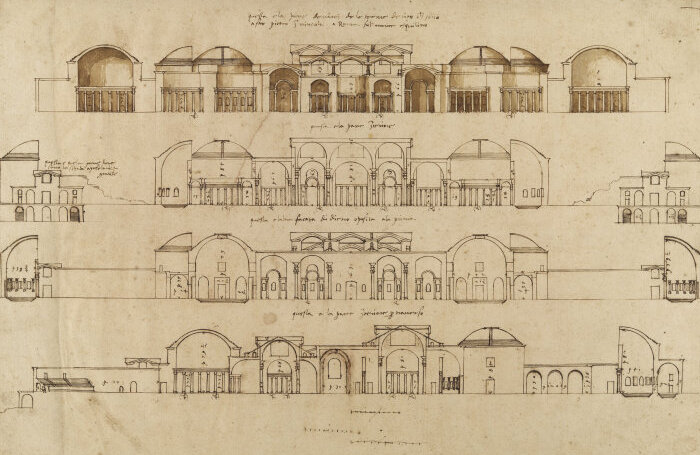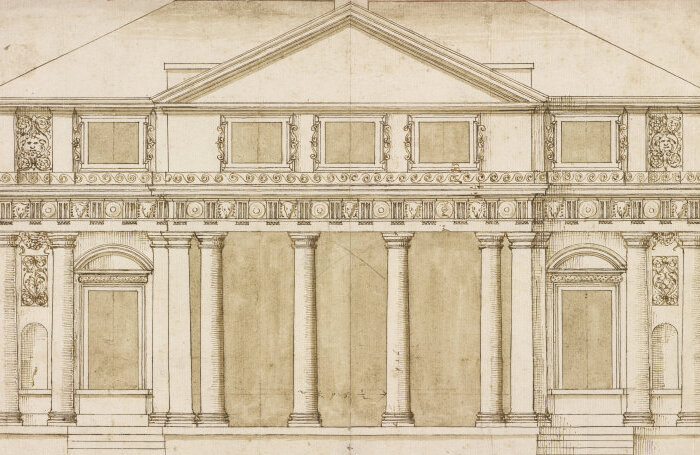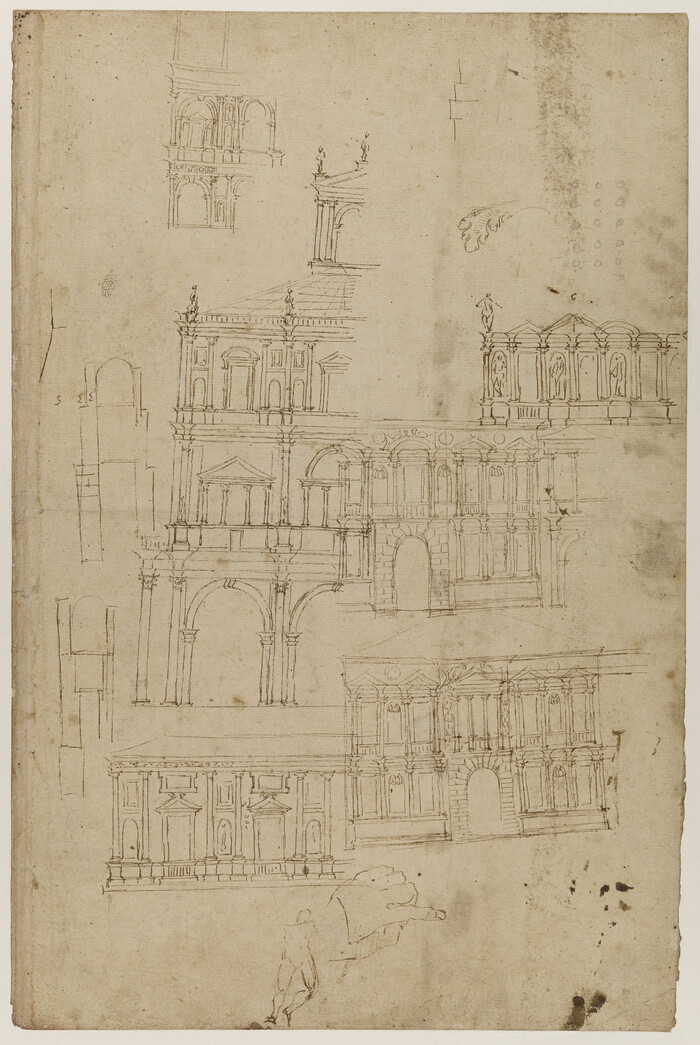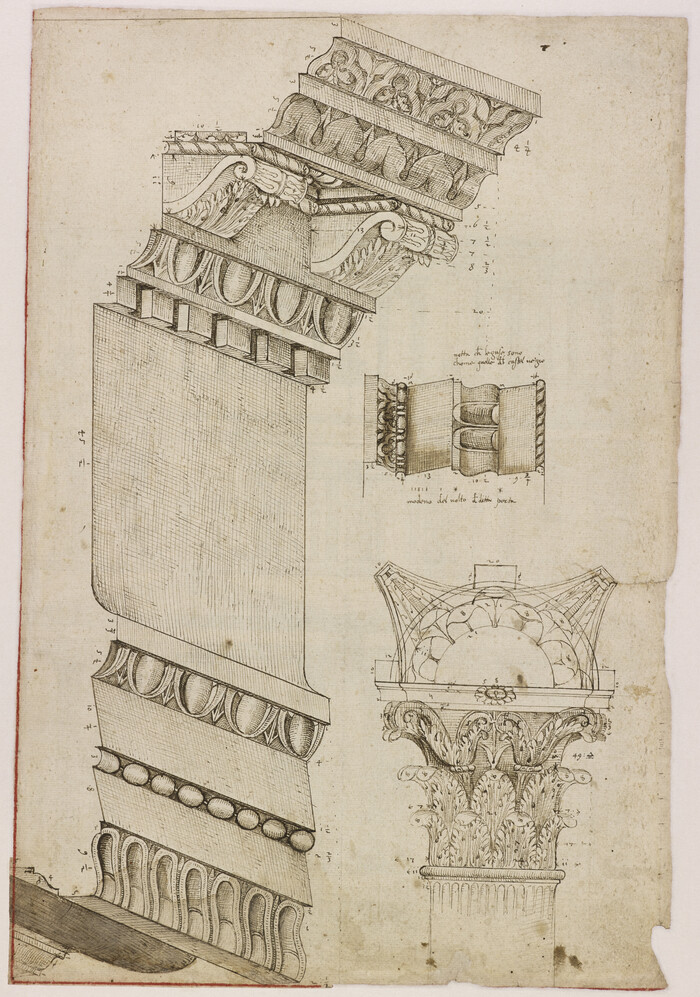Palladio: A complete catalogue of drawings in British collections
Through a collaboration between RIBA Publishing, RIBA Collections and the Centro Andrea Palladio, work is under way to produce a complete catalogue of drawings by Andrea Palladio (1508-1580) in the RIBA and other British Collections, bringing them together in print for the first time.
The project will see the creation of a print catalogue in two volumes, presenting new insights and discoveries resulting from the first systematic reassessment of every Palladio drawing now in British collections.
The project is being generously supported by the British Architectural Library Trust, to whom we extend our warmest thanks. Find out more about their free webinar series programmed to celebrate the new publication, or catch up on recordings of the events so far.

About the drawings
Andrea Palladio was a hugely influential Italian architect of the 16th century. His projects in Venice and the surrounding region set new standards in design and redefined the potential of the artform, combining the lessons of the ancient Romans with the achievements of his predecessors and contemporaries. This collection of Palladio’s drawings offers a unique insight into a Renaissance architect’s mind; while the 19th century vogue for collecting architectural drawings tended to value only finessed presentation drawings, the British archive has been preserved in its entirety, opening a window onto architectural culture and architectural production during the Renaissance, from first ideas on paper onwards. Alongside small sketches on sheets initially used to survey antiquities, showing how design solutions for his own projects were informed by Roman models, we find an intimate record of Palladio’s drawing practice: smudged fingerprints, a sketch of a finger, doodles of acanthus leaves on versos and in margins, tiny human figures and elements erased and revised with paper overlays.

As the first architect to have global reach, the dissemination of Palladian design through print and pattern books has parallels with today’s internet-enabled, globalised information flows. Yet in the 18th and 19th centuries, the style was inextricably linked with the exertion and expression of colonial power as much as with the institutions of democracy. Neo-Palladianism remains a flourishing – though often controversial – style today, and the new catalogue will enable audiences to delve into the original source material for its unprecedented global impact.

Dating from the late 1530s to the late 1570s, Palladio’s drawings were available to all the significant members of Britain’s architectural community until 1753, and their influence can be traced in the work of Christopher Wren, Nicholas Hawksmoor, John Vanbrugh and William Talman, amongst many others. The Anglo-Palladian style of Inigo Jones, founded on these drawings, became influential around the world in the 18th and early 19th centuries, becoming the dominant style in pre-and post-revolutionary America. By the 1820s, this type of architecture had appeared on every continent. No other architectural archive in history has been so influential. And yet, in their more recent history, nowhere have these drawings been reproduced as a complete collection, and many have never been reproduced or exhibited at all.
The project aims to rectify this absence and reveal this hugely significant archive, the bulk of which forms one of the undisputed treasures of the RIBA’s drawings collection. It will create an indispensable resource for scholars, as well as a showcase to inspire contemporary audiences.

About the Project
We are working with the world’s leading Palladio scholars to realise this project. Through collaboration with the Centro Andrea Palladio in Vicenza, the catalogue will benefit from the expertise of its director, Dr Guido Beltramini. It will be further enriched by Dr Pierre Gros, the foremost specialist on the condition of Roman ruins in southern Europe during the Renaissance.
The comprehensive print catalogue will enable unrivalled access to the drawings for a new generation of international scholars, students, architects and the wider public. Those drawings isolated in twos and threes in other collections will for the first time be reunited with the bulk of the collection held at the RIBA, finally enabling a comprehensive assessment of the whole, including scientific analysis undertaken by the RIBA’s senior conservator. Incorporating fresh discoveries made during the cataloguing process, and building on the last 50 years of Palladian scholarship, the catalogue will provide an essential resource to support, inspire and encourage new research.
Explore more stories, projects and resources drawing on the RIBA Collections.






